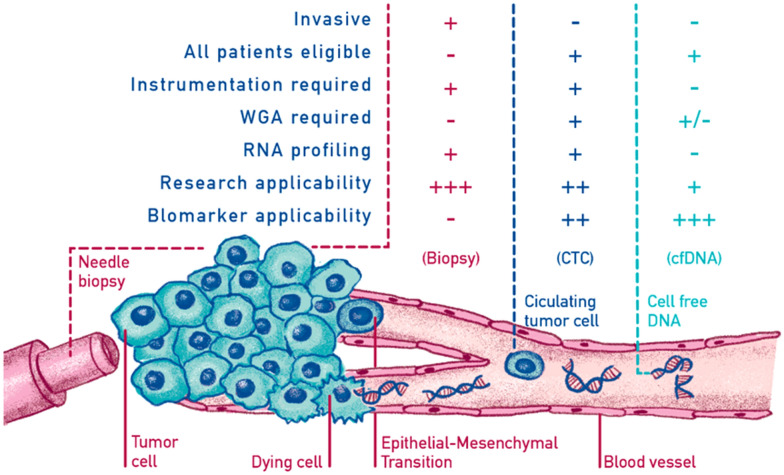Fig. 1.
The molecular characterization of neoplasms allows the correct application of precision medicine, maximizing the results and reducing the treatment’s toxicity. Tissue biopsy is the most widely used method for categorizing tumors and detecting biomarkers. However, it has several limitations: it is an invasive method; it is not always feasible or repeatable; and it provides information limited to a single point in space and time, therefore failing to capture the complexity of cancer. Today it is clear that cancer is an incredibly dynamic disease. During disease, cancers generally become more heterogeneous, with the results that the tumor might include a diverse collection of cells harboring distinct molecular signatures with differential sensitivity levels to treatment. This heterogeneity might result in a non-uniform distribution of genetically distinct tumor-cell subpopulations across and within disease sites (spatial variation) or temporal variations in cancer cells’ molecular makeup (temporal heterogeneity). For this reason, liquid biopsies can help achieve a correct and early detection of various neoplasm diseases, stratify patients to optimize treatment, and monitor the response and resistance mechanisms in the tumor. The non-invasive nature of the liquid biopsy allows systematically repeating of the sampling to monitor changes related to the dynamics of clonal and subclonal variation of the disease.

